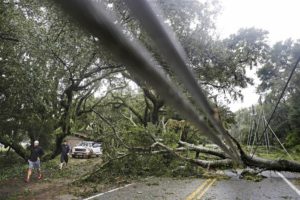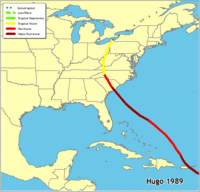COULDA BEEN WORSE
 As disruptive as Hurricane Matthew was for St. Simons Island, Georgia, my favorite spot on the Atlantic Coast, it was not a worst-case, Eyewall-type scenario.
As disruptive as Hurricane Matthew was for St. Simons Island, Georgia, my favorite spot on the Atlantic Coast, it was not a worst-case, Eyewall-type scenario.
Matthew, most importantly (and obviously) was not a Category 5 monster. But there was also a bit of luck that factored into things not being worse: the hurricane jogged slightly to the right, farther away from the coast, as it churned past St. Simons and Brunswick. It also swirled by the island near low tide, substantially mitigating the effects of storm surge flooding. Once past the Golden Isles, Matthew jiggyed back toward South Carolina. So, yes, there was a smidgen of luck that hovered over SSI.
Were the evacuations necessary? Absolutely. You don’t mess around with the eye of a major hurricane stalking along the Florida and Georgia coasts roughly a Bubba Watson drive offshore.
One little blip closer to the beaches and we would have seen 150-mph wind blasts (in the eyewall), not 100 mph gusts. Yeah, the evacuation stuff is a pain in the ass, but better than trying to ride out the storm in a house that might have ended in Disney World or the black waters of the Okefenokee Swamp.
Another feature that helped restrict the storm surge (usually the biggest killer in hurricanes) was the fact Matthew moved from south to north along the Southeast coast. That gave storm surge waters only a limited time to pile up at any one spot perpendicular to the beaches.
It’s the major hurricanes charging into the Florida and  Georgia coasts from the east (Andrew) or southeast (Hugo) that are the most dangerous. For St. Simons, imagine Andrew displaced a few hundred miles north, or Hugo a couple of hundred miles south. That’s the stuff of nightmares.
Georgia coasts from the east (Andrew) or southeast (Hugo) that are the most dangerous. For St. Simons, imagine Andrew displaced a few hundred miles north, or Hugo a couple of hundred miles south. That’s the stuff of nightmares.
By the way, for all the rending of garments and gnashing of teeth that Matthew caused as a major (Cat 3 or greater) hurricane, by the time it crashed ashore in South Carolina it was a “mere” Cat 1. Thus, technically, the landfalling major hurricane drought for the U. S. continues. It’s been eleven years, the longest stretch on record, since the last big beast powered inland. Wilma in 2005.
The Sword of Damocles remains in place.